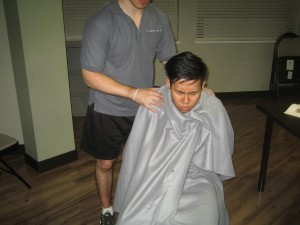To complete standard first aid training candidates need to be able to treat, provide care for and recognize patients suffering from shock. To treat for shock rescuers should focus on providing care and support to help breathing and circulation. Participants will learn to treat for shock for almost every first aid and emergency scenario. The material posted on this page is for information purposes only. To learn to recognize and treat for shock take a standard first aid course through a credible provider. Register in courses with our training partners throughout Canada including in Regina, Saskatoon, Thunder Bay and Windsor to learn about various circulatory emergencies including shock.
Participants must meet the following criteria when treating for Circulatory Emergencies including Shock to complete the course:
- Check the scene for any dangers or hazards.
- Determine the mechanism or history of the emergency.
- Assess the patients level of consciousness.
Rest, reassurance and warmth are integral components to helping victims of shock. - Assess the victims breathing.
- Send a bystander to contact emergency medical services and obtain a AED.
- Complete the primary assessment.
- Place the patient into a sitting position or into a appropriate and comfortable position.
- Reassure the patient.
- Keep the patient warm.
- Monitor vital signs.
Additional Notes:
A popular and useful acronym for treating shock is “WARTS”.
- W – Warmth – Keep the patient warm.
- A – Airway – Maintain an open airway.
- R – Reassure – Reassure the victim.
- T – Treatment – Treat any other problems.
- S – Semi Sitting / Suitable Position – Place the patient into a suitable or semi-sitting position.
Participants need to be aware to treat for shock whenever possible as it is a essential component of the course. For more information about shock and how to recognize and treat it, enrol into a standard first aid course offered through a credible provider. Re-certification is recommended at least every 3 years.
